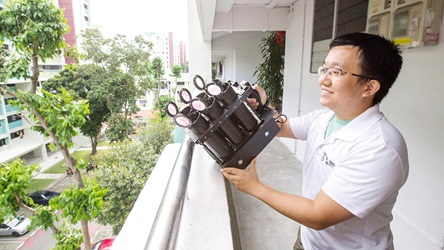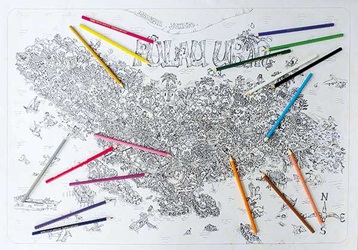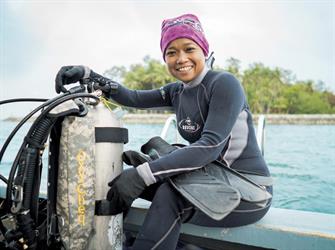Walking on the Wild Side
.jpg)
A black blur shoots past Mr Alan Tan’s face as he peers into a hole in a tree trunk. He pauses in shock, and another tiny animal springs out from the palm-sized opening. It flees into the forest; four more of its winged brethren follow.
Mr Tan scans the trees for a glimpse of the creatures, but they are nowhere to be seen. He was knocking the tree trunk with a mallet to check its health after spotting the hole. He exclaims: “I thought a snake would come out. We’ve seen that before but not bats!”

The senior conservation manager at the National Parks Board is on one of his regular walks to inspect the flora and fauna of Chek Jawa Wetlands. The 100-hectare wetland is on the eastern coast of Pulau Ubin, where he is the custodian.
After nine years on the job, the 51-year-old still relishes every chance to discover more about the wetlands. “Chek Jawa is very interesting because there are six habitats in one small area. And you cannot say that you’ve seen everything; some days, something new just turns up.”

While seeing bats is rare, the friendly o‑cer does not bat an eyelid as two wild boars cross his path. Instead, he is more occupied with demystifying the creatures for curious passers-by.
Passer-by: “Do they chase after humans?”
Mr Tan: “No, they don’t. When they feel threatened, they won’t attack, they will run to escape. But don’t go too close. If they’re surrounded, they might run in your direction– that’s it, then you kena!”
Raising awareness of Ubin’s wildlife in a fun way is Mr Tan’s favourite part of the job. The nature enthusiast delights in bringing people down to the shore to share about Chek Jawa’s natural heritage up close, whenever the tide permits.

Beyond conveying facts, he seeks to engage participants. His objective is to make them laugh “at least once”. He says: “If I can see them smile, I’m happy already.”
So he peppers his guided walks with jokes and pop culture references. “If you’ve started hatching your Pokémon egg, you’ll be at least half-done,” he says, referring to the popular Pokémon Go game. And “don’t give your boyfriend or husband a mangosteen,” he quips. “As they eat, they will become younger as ‘man goes teen’.”


“It’s a very small community, you know everybody and everybody knows you,” says Mr Tan.
Every journey to Ubin is a respite from the bustle of city life for him. “I love Ubin for its natural state. When I come here, I feel very calm. That’s why I enjoy working here.”


- POSTED ON
Nov 1, 2016
- TEXT BY
Tay Qiao Wei
- PHOTOS BY
CATSPACE
-
nofilter
Tunnel Vision
-
Feature
Coming Together For Ubin









